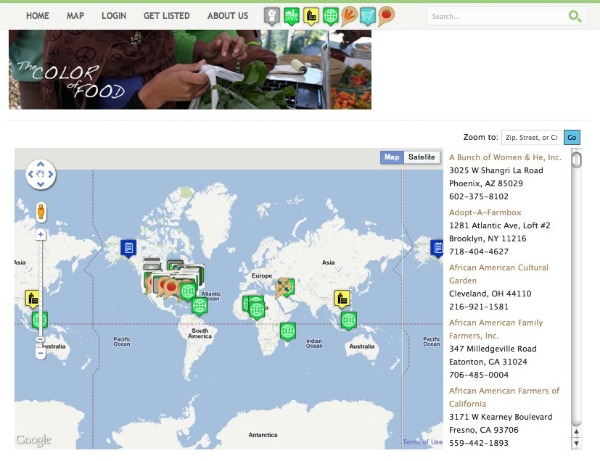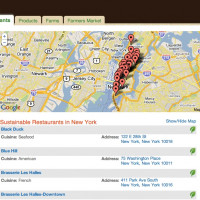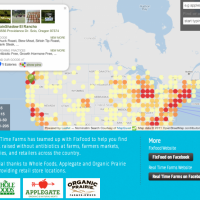An interactive Google map created by development shop Small Farm Central has spruced up the new Color of Food directory locating farms and food institutions in communities of color around the globe.
The map now shows not only the location of organizations, but also uses icons to differentiate between different types of groups, including farmers, urban growers, youth organizations, restaurants and nutrition programs.
With the map, Color of Food hopes to link parts of the now fragmented food system by allowing farmers, restaurants and organizations to connect with one another.
The vision for the Color of Food, and for the map, began when founder Natasha Bowens visited farms through the WWOOF network. She found that few who took advantage of the program were people of color.
“I started hopping around from farm to farm and noticed how exclusive it could be,” said Bowens. “I didn’t see a lot of faces like mine – there were not a lot of brown farmers. Even when I went international with the WWOOF program, there were not a lot of people of color being represented either as the farmers or the volunteers.”
Bowens was also passionate about food justice, and began thinking more about the lack of access to food in many neighborhoods. “Clearly the communities of color are being impacted more by the broken food system,” commented Bowens, “yet their voices are not being heard, neither within the system or within the new movement that is taking hold.”
She started a blog about her journey looking for “other brown farmers,” and wrote “The Color of Food,” for Grist. The response was overwhelming.
“We started thinking about making our own network where farmers of color could really be put on the map,” says Bowens. “A place where voices could be raised and connections could be made. And how the great beautiful projects out there in these communities could be lifted up and shown as great models.”
Thus the Color of Food map was born.
Bowens and her team hopes to incorporate more farmers, activists and food system workers from around the world on the map. They also say the map has helped put many farms online for the first time, and is connecting small farms to resources and activists in their region. Now, says Bowens, it is up to those on the map to lead where it will go.
“I will see where they lead me,” she said. “We will let it grow.”






